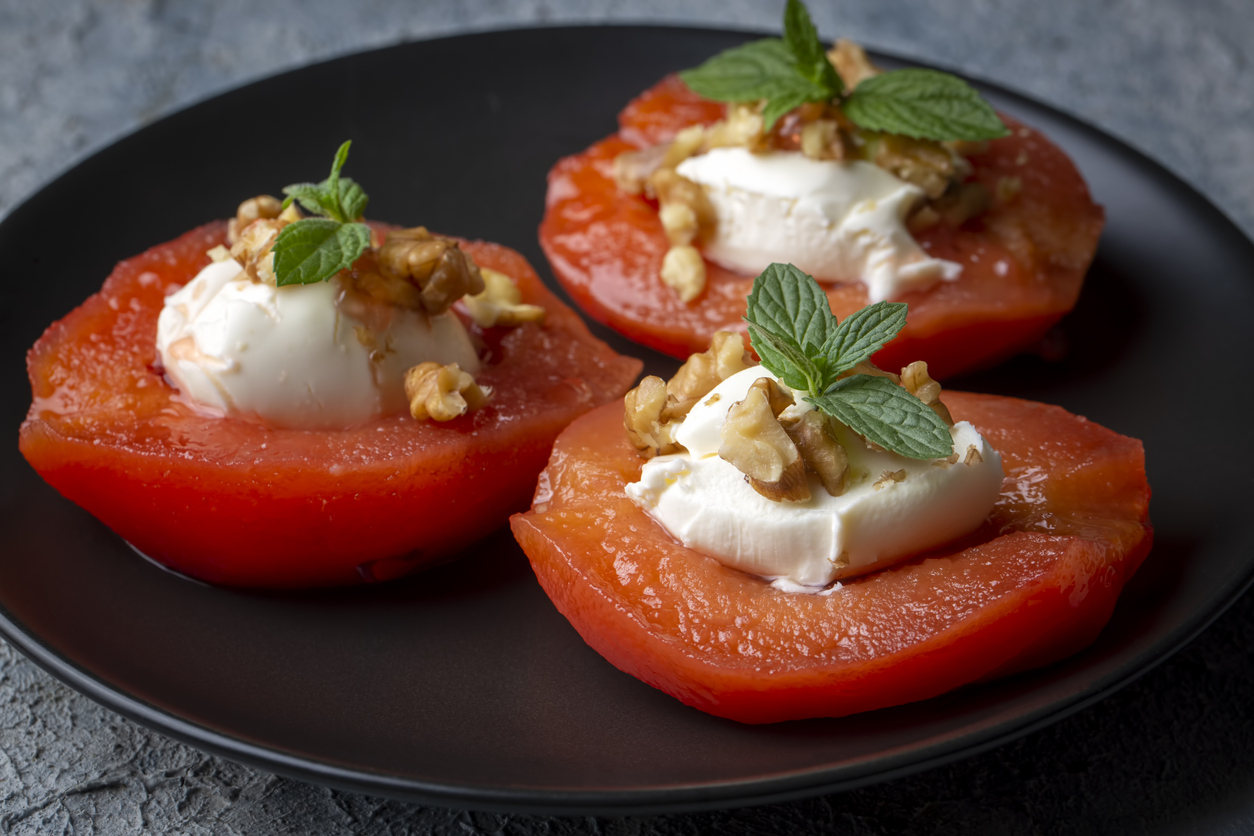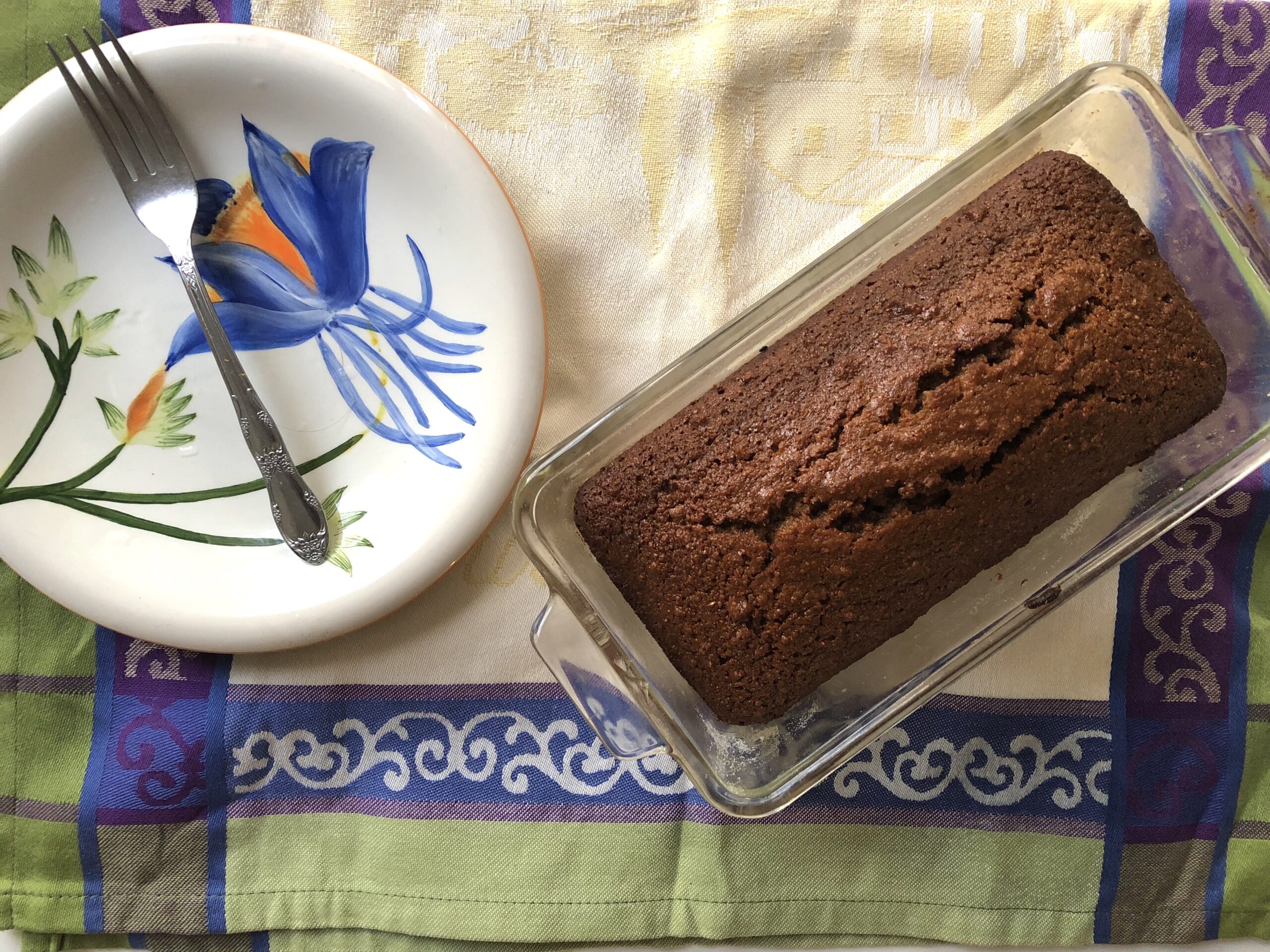The holiday season is here, and it is time for celebration. With celebration, comes celebratory food, including a wide variety of delicious sweet treats. But this doesn’t mean you need to abandon your healthy lifestyle! You can keep up your tasty traditions and look for ways to add in nutritious ingredients. Every little bit counts!
Oldways Director of Nutrition and Registered Dietitian Kelly LeBlanc has a great tip about desserts, inspired by the principles of the Mediterranean diet. Kelly’s advice? Keep some sugar, and also think about adding good nutrition to desserts-nuts, fruit, healthy fats (like olive oil), and whole grains!
A lot of Mediterranean sweet treats already contain these healthy ingredients since the Mediterranean climate lends itself well to agriculture, including the cultivation of many types of fruits and nuts including oranges, lemons, figs, dates, grapes (and raisins), berries, persimmons, chestnuts, pistachios and almonds-just to name a few. Many of these ingredients possess varied culinary uses, including desserts.
To illustrate how these healthful Mediterranean ingredients can be transformed into decadent after-dinner delights, we’re looking to a few Mediterranean countries including Spain, Turkey, Greece, Italy, France, and Israel and the Eastern Mediterranean.
Spain: Orange and almond cake is a classic dessert that draws on the Sephardic traditions of the Mediterranean, Morocco and the Middle East. One of our favorites, Tarta de Santiago is an almond cake originating in Galicia (in the northwest corner of Spain) during the time of the medieval pilgrimage known as the Camino de Santiago. The tart is traditionally decorated with the cross of St. James; to this day, pilgrims making their way along one of the many routes appreciate a slice of this tasty Spanish cake after (and during) their long journey. This cake uses almond flour and is naturally gluten-free. With its rich nutty flavors and bright citrusy notes, there is no surprise that it pairs beautifully with fresh fruit.
Turkey: In Turkish, Ayva tatlisi (pronounced EYE-VA TAT-LEH-SEH) means quince dessert, which is served during the quince season from September to January. The quince is peeled, cut in half and then baked for about an hour and a half in the juice of another seasonal fruit, pomegranate, along with sugar and a cinnamon stick. To serve Ayva tatlisi, put the quince on a plate and top with clotted cream, crushed pistachios, or walnuts. Another type of Turkish sweet, Lokum, which is commonly known as Turkish delights can be found everywhere in Turkey. They are a sweet chewy treat made from starch and sugar and flavored with rosewater, orange blossom water, or lemon, as well as chopped pistachios, hazelnuts, or walnuts.
Greece: One of the most iconic Mediterranean desserts (found in Turkey and Greece), is baklava, which includes sheets of sweet filo pastry filled with layers of chopped nuts-anything from pistachios, to walnuts, to almonds. Toasting nuts and seeds will coax out their inherent sweetness and nuttiness. Certain nuts, such as cashews, have a high fat content, which makes them ideal for soaking and puréeing into a rich plant-based whipped ‘cream’. Adding nuts and seeds to desserts is a delicious way to incorporate more protein, more fiber, more heart-healthy fats, and most importantly, more flavor. (In Turkey, the classic baklava from Gaziantep features pistachios.)
We also learned about spoon sweets or Kydoni Glyko in Greek, at an Oldways Symposium on the North Aegean islands of Chios and Lesbos. Spoon sweets are made by boiling fruit or vegetables, nuts, or flowers in a sugar syrup, and infusing them with spices and herbs, with a consistency much thicker or chunkier than jam or jelly. Spoon sweets are considered a sign of hospitality in Greece, and are served on small plates, with accompanying small spoons-now you can guess why they are called spoon sweets! To make your own, Aglaia Kremezi has a great recipe on her website, Aglaia & Costas’ Table on Kea.
Italy: Sicilian orange olive oil cake is so special and meets the approval of our Italian friend Fausto Luchetti, as well as meeting Kelly LeBlanc’s criteria of adding nutrition: a healthy fat (extra virgin olive oil), whole grains (whole grain flour), fruit (orange), and nuts. What’s not to love? Citrus, extra virgin olive oil, a dusting of sugar and crushed almonds. We adapted this recipe from Mark Bittman’s book, How to Cook Everything.
France: In France, a country renowned for its pastries, you’ll find a wide range of fruit-based desserts, such as apple or pear tarte tatin, an upside-down, rustic French tart in which the fruit is first caramelized in sugar and butter until golden and bubbly, and then layered with puff pastry and baked in the oven. Just before serving, the tart is inverted so that the caramelized fruit is on top and the flaky pastry is on the bottom. Yum!
Tarte fine aux pommes is another option, which is a beautiful French apple tart featuring apple slices that have been fanned out like petals of a rose, layered into pastry dough, and then baked in the oven. Clafoutis is a French dessert of fruit, traditionally black cherries, arranged in a buttered dish and covered with a thick, custard-y batter. You’ll also find Galettes in France, which are rustic free-form tarts filled with just about any combination of fresh fruit.
Along with plenty of fruit-based desserts in France, there are also many opportunities to incorporate whole grains! For example, Pain D’Epices is a French spice bread made with whole rye flour! It is fragrant, flavor-packed, and irresistible. In fact, cakes of this sort, often made with rye or whole grain semolina are popular all over the Mediterranean.
Israel and the Eastern Mediterranean: Yotam Ottolenghi, chef and author of the book, Jerusalem, writes, “Some cakes have coconut in them; some have yogurt; some bakers prefer flavoring them with citrus syrups, others with flower blossoms; some use sugar and others honey. In any case, the moist yet light texture and the aromatic flavors are what it’s all about.” Same goes for cookies-for example these, Orange Blossom Tahini Cookies from Al Wadi!
Although this is just a tiny collection of healthy desserts you can find throughout the Mediterranean, remember that by “Mediterranean-izing” the ingredients, desserts can be both delicious and healthy.
Here are a few simple Mediterranean desserts:
- Dates or figs stuffed with goat’s cheese or ricotta and topped with nuts
- Parchment baked fruit
- Greek Yogurt with fruits and nuts
- Blue cheese and pistachio stuffed strawberries
- Black Olive Cake
- A few slices of raw milk cheese with a fruit spread on whole grain crackers or bread
This holiday season, we challenge you to use dessert as an opportunity to deliver the good stuff, like whole grains, fruits, herbs and spices, nuts, and olive oil!
Want biweekly Med Diet information and recipes in your Inbox? Sign up for our Fresh Fridays newsletter by clicking the Subscribe button at the bottom of this page!
Join the Make Every Day Mediterranean Club Facebook group for additional information and support.











Leave a comment